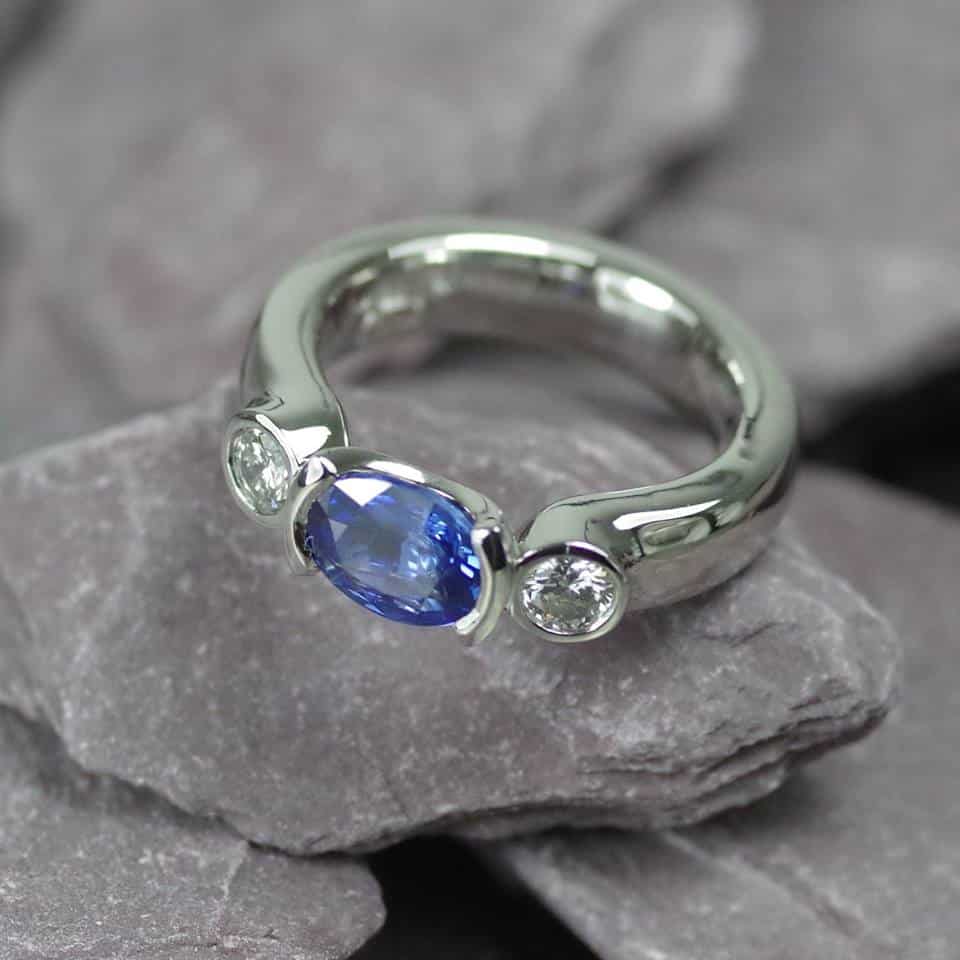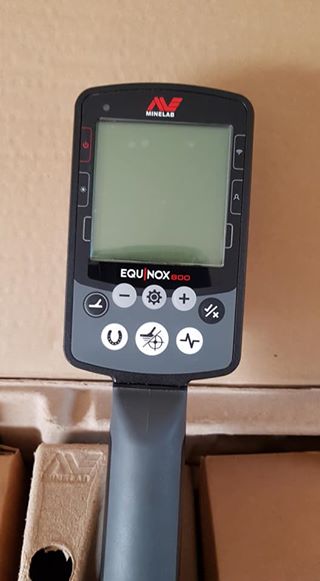
After your first weeks or months practicing this wonderful hobby, you will find out that there are some elements that are rare and valuable at the same time. And Platinum is a perfect example!
Indeed, finding this element is as great of an achievement as finding gold or a gemstone. That’s why, probably just like you, I was thinking and wondering whether my machine can afford detecting it …
… So, do metal detectors detect platinum? Platinum has all the characteristics to be easily detected by most metal detectors. Indeed, it has a considerable electrical conductivity and thermal properties. Consequently, it reacts to the magnetic field that comes from your machine’s coil, thus you will easily find it.
In this post I will give you more details about this metal that you need to be aware of. Also you will learn more about locations where you will likely find it and how you can easily recognize it once it is between your hands.
In addition, I will address some detectors that can perform much better than other when it comes to detecting platinum.
Platinum and its family of metals are all detectable …
As a hobbyist it is interesting to know the different kinds of metals in nature. By doing so, you won’t need each time to check whether a specific element is detectable or not. All you have to do is to be aware of the category this element or metal belongs to easily judge its detectability.
Indeed, there are 2 main types of metals (ferrous and non-ferrous metals). As a detectorist, you will soon find out that your mission is to find as much non-ferrous metals as you possible.
Why? Simply because they are useful, valuable and exploited in several industrial usages. Gold, Mercury, Copper, Silver, Brass, Bronze, Aluminum are all relevant and notorious examples of non-ferrous metals.
In our case, Platinum is another non-ferrous metal! You need to know that all metals that fall into this category are easily detectable. They’ve all got enough electrical conductivity …
Of course there are some machines that are suited more for some metals rather than others. For example PI detectors will help you to find more gold and won’t be that much helpful for other metals. This generally depends on other variables like operating frequency, coil size and things like that …
Best metal detector for platinum!
In this paragraph I will just provide you with 2 suggestions about machines that are more adapted to platinum. I mean, there are others for sure, but here, I am just aiming to provide you with information to be aware of its main characteristics.
Treasure Cove TC-3020
The TC-3020 (Pretty Cheap! You can Check its Current Price Here at Amazon!) is categorized as a treasure hunter, as it is a decent asset for finding valuable items (Gold, Platinum …) even if they are located close to junk metals. In fact, it has a mode that allows you to focus on a specific metal by customizing its tone volume for example. Otherwise, you keep it watching out all sorts of metals if you want to.
Generally, this device is recommended not only for beginners, but also for kids. Actually, it doesn’t represent a challenging learning curve like many detectors on the market. Plus, it is very easy to assemble and even to fine tune, just by following the vendor’s instructions. Kids generally like it also because it is really light in terms of weight.
What I also like about TC-3020 is the possibility to input data like the nature of the metal and the underground depth. This is useful when you are looking for a lost platinum ring in beach sands or a muddy/soaked ground for example. The LED screen allows you to inserts all these kinds of settings …
It can operate well enough in a stiff ground condition. Whether it is a salty or mineral rich soil, it will give you the edge to look through that …
Last time, I’ve checked Amazon, I’ve found that a 10 year warranty is offered with this metal detector which is Huge! I personally like that …
Minelab Equinox 800

This is by far my favorite machine (You can Learn More About it Here at Amazon!), it has a ton of solid features that will allow you to come up, not only with Platinum, but also with other valuable targets like Gold!
It can operate well on all kinds of locations:
- Fields.
- Beaches.
- Woods.
- Conductive Soil.
Also, it has the ability to operate on several frequencies, from 5 kHz up to 40 kHz! You can operate on these frequencies all at the same time if you want to!
Finally, what I like the most is that the company (Minelab Electronics) offer to the customers the possibility to upgrade the operating software of this machine for free! It is available on their official website!
Where is Platinum Found?
One of the best locations without doubt would be on popular beaches that folks visit a lot during the summer and changing clothes on the water line and any of these types of places.
Locations or Parks that have just hold big event could easily be an opportunity to find platinum made jewelry. This one could require a permission … I know the headache that comes with that, but it is absolutely worth it.
Farming field are another obscure opportunity, generally the depth is a non-issue. Indeed the farmer work makes that any object underneath could come closer the surface. That’s why in many cases you won’t need a high performing machine in terms of depth in farming fields.
Generally, it is relatively easy to get a detecting permission from a farmer. The latter is generally familiarized with detectorists to find things like property stakes and septic tanks.
To get more ideas on places to search, I highy invite you to check this complete list of 50 metal detecting places!
Where/How to Find Platinum Nuggets?
Finding platinum nuggets is even rarer than rings and jewelry made out of this metal! So the answer to this question is simply being able to locate places when you will likely find them.
I will give you few examples of locations just to have an idea …
Ural Mountains: they cover a big part of western Russia from the north to the south. They are notorious for production of platinum nuggets. They are also known for holding different kinds of gemstones. It is very hard to expect nuggets with large sizes, it may happen to find one with few hundreds grams of weight, but it’s definitely rare. On the hand, you should expect extra undersized pieces.
Kondyor Mastiff: It is a big intrusion on eastern Russia. This place is known for significantly bigger platinum nuggets. This is not the only metal you can find out there, it is also common to find some gold in there.
California gold mines: There are serious opportunities in the north of the state to find valuable nuggets. Indeed, at the beginning traditional miners weren’t able to recognize platinum as a precious metal. Instead they’ve just focused on gold … This left the room to find several nuggets with significant sizes every single year.
Other examples of locations: The locations I’ve just mentioned above are probably the most famous ones. Yet, there other many examples like Alaska, Colombia, Oregon as well as others …
How to identify platinum?
I feel that identifying metal detecting finds in general is a crucial skill that every hobbyists should have. That’s why I wanted to include this section to help you identify platinum as easily as possible …
What does platinum look like?

In most cases you will find platinum with the grey color. Sometimes it could be dark or even silver. This is actually due to the fact that it is most often mixed with other metals.
This includes iron, osmium, iridium, copper and even gold!
How to Identify Platinum Ring?
Now, let’s say you’ve just found a grey ring! How to make sure that it is made out of platinum? Just follow these few steps …
- In case the tones coming from your machine are pretty low, than this is a good indicator.
- If the ring has a stone on it and you’ve verified that it is a real gemstone, than chances are, 99% if not more the ring is platinum. FYI, There are cheap stone testers in the market.
- When the ring has a word on it (PLAT or PT). This stands for Platinum.
- In case there is a number on it (900 or 950). They respectively mean 90% and 95% or pure platinum.
These are the main tips that will help you to judge a ring you’ve just found!
How to test platinum
There other easy ways to make some tests that I want to share with you here:
- Use a magnet: As I’ve said before platinum is a non-ferrous metal which means primarily that it not magnetic. So all what you have to do is to put it close to a strong magnet and see what happens. This test is a good indicator, yet it is not very accurate as platinum could be in alloys mixed with magnetic metals.
- Acid Testing Kit: You can use it not only to identify platinum, but also for many other kinds of metals. Just apply the acid on the metal and compare the output color with the color chart. Please make sure to have your gloves put on so you won’t burn your hands.
- Hydrogen peroxide: it reacts to platinum as bubbles will start showing up instantly. Just soak the metal in peroxide and watch what happens!
For more tips, just check this finds identification guide!
Platinum nugget price
The price depends on many things, this includes:
- Who the seller is.
- The location (According to what I see Russia nuggets cost more than those coming from the US).
- How rare it is.
- Of course the size (in grams/ounces).
- How pure it is.
- How beautiful it is.
But generally, if you go to e-bay, for example, you will find nuggets costing around 500 bucks that are barely 1 and a half grams.
Also, there are nuggets that cost 3500 bucks that hold several dozens of grams.
Biggest Platinum Nugget
I’ve found that the largest platinum nugget ever found was in Russia. It weights around 14.8 ounces which equals 419.57 grams.
But this nugget was found probably in 2011 or a bit earlier! So since then there might be bigger nuggets found, who know?
If you know about a bigger nugget, please let me know in the comment section below so other nugget hunters will learn that as well …
Conclusion
Platinum is more valuable than Gold and finding it is a dream for all hobbyists! That’s why I really wanted to put together with Post to answer all questions you might have about the topic.
Hopefully, you will have a much complete idea that could potentially lead you to your next Ring or Nuggets.
Finally, of you are interested in other similar items! You can check this Titanium Detection Guide! You will learn some helpful info in there …
